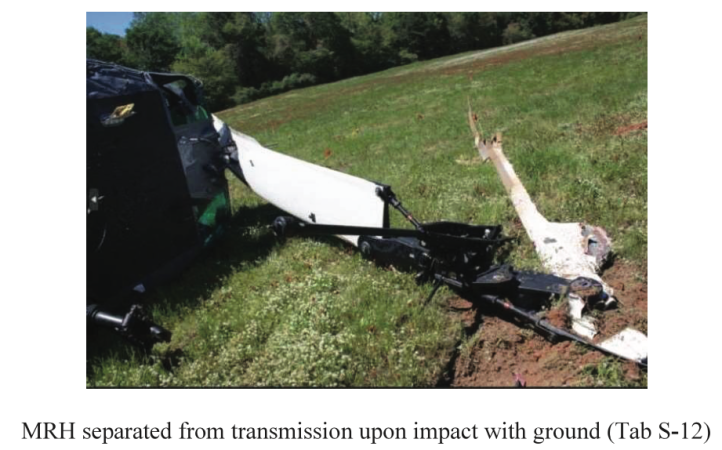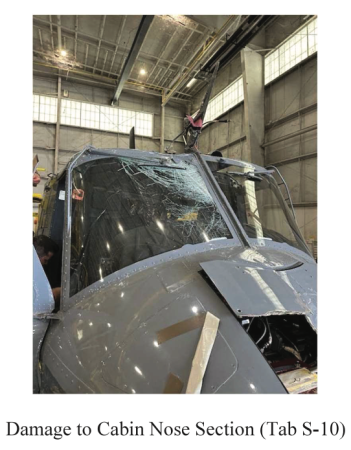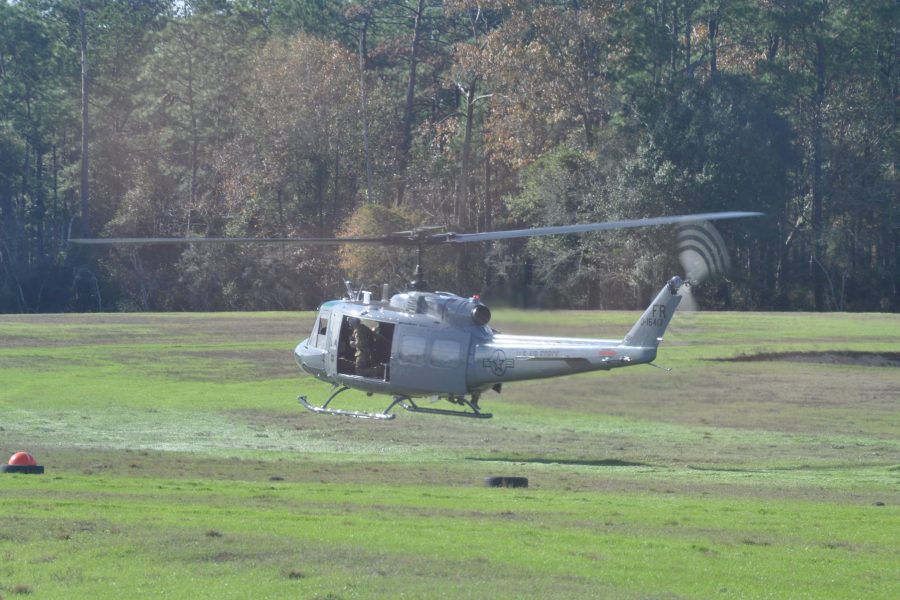A helicopter instructor pilot failed to take sufficient corrective action in time to fix the mistakes of a student pilot taking off from a slope, resulting in a rollover that caused nearly $11 million in damages to a TH-1H chopper last spring.
A new Air Force Accident Investigation Board report released Feb. 6 faulted pilot error on the part of both the teacher and the trainee.
The mishap took place April 3, 2024, at Skelly Stagefield Army Heliport, Ala., during a training flight for the 23rd Flying Training Squadron—the Air Force’s main unit for training helicopter pilots.
During the flight, the instructor pilot was evaluating three student pilots after they each had flown three sorties in the TH-1H, a trainer version of the UH-1H Huey.
Nearly an hour and a half into the flight, one of the student pilots was working on taking off and landing on slopes. After one successful landing and takeoff on an incline, the helicopter was on a grassy 5-degree slope, with the right skid higher than the left.
When it came time to take off again, the student pilot used the “cyclic”—a stick used to control directional thrust—and the “collective”—a lever to control overall vertical lift—to raise the lower left skid off the ground.
However, the trainee went too far. While he thought the aircraft was level, it wound up in a slight right bank of a few degrees. Then, the student became disoriented and thought the right skid was slipping and sending the aircraft sliding left.
Using the cyclic to push the aircraft further right, the student had the helicopter in a 6-to-10 degree bank. Combined with the upward lift from the collective, the bank caused the chopper to roll onto its right side and the main rotor blade hit the ground.
The whole incident took only a few seconds, but the report noted “significant damage” to the helicopter’s nose, cabin, mast, and main rotor head and tail rotor assemblies. The costs were estimated at $10.8 million.


Investigators noted that during the mishap, the instructor pilot only verbalized that there was a problem once, when the student was applying “right cyclic.” As the aircraft passed beyond a level attitude, the instructor said “no, no, no,” while attempting to apply “left cyclic.”
The corrective maneuver wasn’t enough to counter the student’s mistake, however, and the instructor never attempted to lower the collective—a costly error.
“Reduction of collective is most effective in controlling rolling motions and is the recommended procedure to prevent a dynamic rollover event,” the report states.
The student, meanwhile, was faulted in the report for misjudging the aircraft as level and becoming disoriented, thinking that the helicopter was sliding when it was “actually stationary over the surface of the ground.”
Both pilots’ mistakes caused the crash, and no other factors contributed to it, the investigation found.
The instructor was a highly experienced helicopter pilot, with more than 1,800 flight hours in a TH-1H and 5,200 hours of flight time overall. In the 30 days preceding the accident, he had flown more than 12 hours over the course of 9 sorties.
The student, by comparison, had just 4.5 hours in three sorties in the TH-1H and was “not qualified to accomplish anything unsupervised,” the report noted.
The incident marks a rare mishap for the Air Force’s helicopter fleet, particularly the venerable but aging H-1. According to service statistics, the H-1 had just one “Class A” mishap in the prior decade. Class A mishaps involve either a death or more than $2.5 million in damage.
